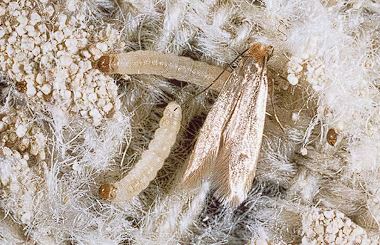Rug Moth Repair
We’re Passionate About Rugs. Dedicated to Quality.

Save Your Rugs from Silent Damage
Moths might seem harmless at first glance, but if you own a wool, silk, or antique rug, they can become your worst nightmare. These tiny invaders thrive in dark, undisturbed areas—under furniture, in closets, or rolled-up storage—and quietly chew through the fibers of your rug, leaving behind irreversible damage if left untreated.
If you’ve recently noticed odd thinning, bare patches, or fine white webbing on your rug, it’s time to act fast. Searching for “rug moth repair near me” is your first step toward saving your investment before the damage worsens.
In this guide, we’ll walk you through the signs of moth damage, the rug moth repair process, and how to find qualified experts near you.


Why Moths Love Rugs
Moth larvae, not the adult moths themselves, are the real threat. They feed on keratin—a protein found in natural fibers like wool, silk, and cotton. Rugs made from these materials are especially vulnerable, particularly when stored in dark, humid, or rarely disturbed places.
Moth larvae can remain undetected for months, chewing through the pile and backing as they grow. By the time you spot damage, they’ve likely been at work for quite a while.
Signs Your Rug Has Moth Damage
Identifying moth damage early can save your rug from permanent loss. Here are some key indicators:
• Bare or threadbare patches that don’t seem caused by regular wear
• Frayed fibers or unusual holes
• Loose or crumbling knots
• Fine white webbing or powdery residue on the rug’s surface or backing
• Live larvae or moth casings in dark corners or rolled-up rugs
Moth-damaged areas often appear uneven, with the pile disappearing in irregular sections. The affected zones may also feel softer, looser, or thinner than the rest of the rug.
Why You Shouldn’t Delay Rug Moth Repair
Moth damage doesn’t stop on its own. Once larvae establish themselves, they continue to feed, often in multiple areas. The longer you wait, the more costly and complex the repair becomes—and in severe cases, the rug may become too compromised to restore.
Timely rug moth repair can:
Stop further fiber loss
• Prevent holes from spreading
• Restore structural integrity
• Preserve the rug’s resale or heirloom value
• Avoid infestations spreading to other rugs or textiles in your home.

Step 1: Inspection & Damage Assessment
Our expert examines the rug to identify all signs of moth activity, including live larvae, weakened areas, and the extent of fiber loss.
Step 2: Professional Cleaning & Moth Treatment
The rug is thoroughly cleaned to remove any dirt, larvae, eggs, and moth casings. Eco-safe insecticidal treatments may be applied to ensure no larvae remain.
Step 3: Fiber Matching & Reweaving
Damaged sections are reconstructed using hand-matched fibers and dyes. Weaving techniques replicate the rug’s original knot structure and pattern as closely as possible.
Step 4: Fringe or Edge Repair
Moths often target rug edges and fringes. These areas may be reinforced or replaced entirely to restore stability.
Step 5: Protective Treatment
Optional moth-proofing solutions can be applied to prevent future infestations, especially for rugs in high-risk storage areas.
Rug Moth Repair in Leonia, NJ
At The Rugsters, we offer expert moth damage repair for area rugs of all types, including wool, silk, antique, and Oriental styles. Based in Leonia, NJ, we proudly serve homeowners across Bergen County—from Ridgewood and Hackensack to Englewood and Fort Lee.
Our moth repair services include:
➣ Professional deep cleaning and insect removal
➣ Hand-matched fiber and dye restoration
➣ Reweaving of missing or chewed areas
➣ Fringe and edge repair
➣ Moth-proofing treatments for long-term protection.
Let us help restore your rug’s beauty and integrity. Contact The Rugsters today for expert moth damage repair with craftsmanship you can trust.
Message Us
The Rugsters
Area Rug Cleaning
Oriental Rug Cleaning
Rug Repair and Restoration
Pet Stain and Odor Treatment
Flooded Rug Repair
Bergenfield - Cliffside Park - Englewood - Fort Lee - Garfield - Hackensack - Leonia - Lodi - Manhattan - North Bergen - Paramus - Ridgewood - Union City - West New York
